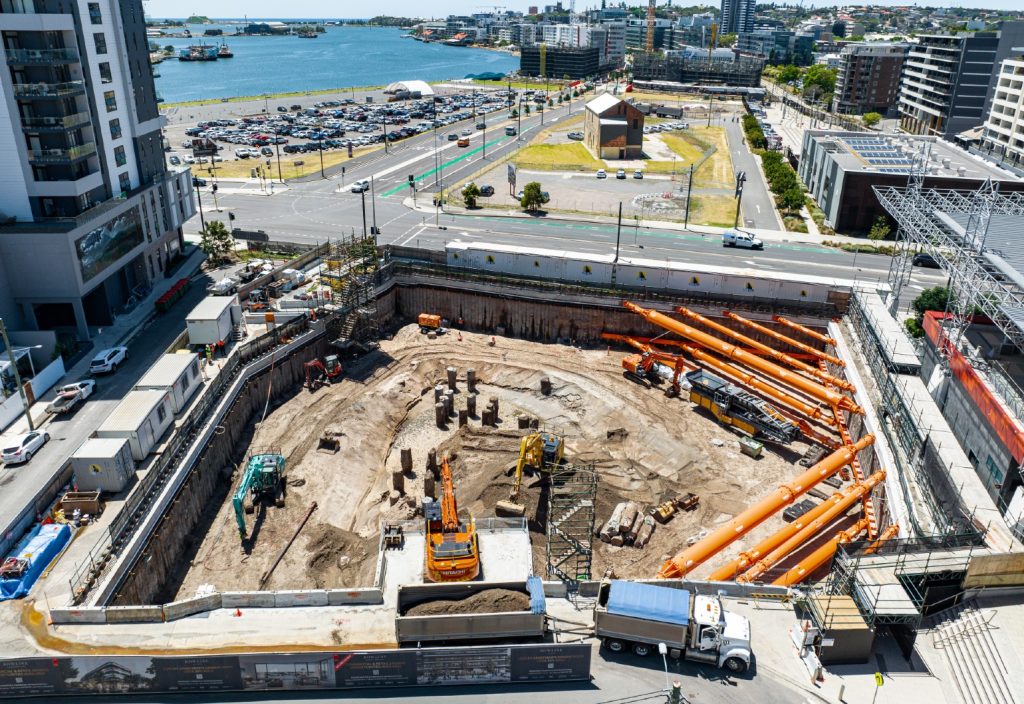Commonly an afterthought in years gone by, temporary works have been thrust into the spotlight – and it’s no surprise given the myriad benefits they bring.
Temporary works flew under the radar for many years in Australia, but COVID-19 has fundamentally changed the status quo of the construction market.
Supply chain issues, the difficulty in securing labour and escalating construction costs have been key factors contributing to this change, spurring a recent uptake in advanced proprietary systems in temporary works solutions as a cost-effective and sustainable solution.
“Contractors typically have a structure designed and built in steel and then scrapped at the end of the job. But by utilising available proprietary products for temporary works, they instead have access to an established fleet of equipment and a well-developed process. This is often supported by an expert supplier with significant experience in temporary works,” says David Dragicevich, National Technical Engineering Manager at Coates.
“There’s been a fundamental change in the value of reusable proprietary equipment. That’s because construction companies are realising the huge benefits of proprietary equipment applied in construction.”
The recent uptake of temporary works is bringing Australia in closer alignment to some overseas markets.
“Temporary works is given much more focus in the UK and Europe,” says Dragicevich. “They have many well-established and dedicated temporary works teams within engineering companies and consultancies. It’s fantastic to see the same starting to happen here too.”
Benefits of temporary works
Temporary works have become an attractive proposition due to their sustainability benefits.
“A proprietary piece of equipment that can be reused many times is much kinder on the environment than something that’s tossed out at the end of a project,” says Dragicevich.
Last year, Coates, in partnership with Monash University, developed Quadshore 150 – the world’s lightest structural support system for temporary works.
“Through this partnership we’ve developed a lightweight and high-strength piece of equipment that requires fewer trucks, fewer labourers and fewer pieces of equipment to unload, build and handle the temporary works,” says Dragicevich.
“All of these things go towards driving down the carbon footprint of doing a piece of work on a construction site.”
Two of Coates’ new products – MP375 strut and HW500 waler, both of which are reusable and can therefore help customers drive down costs and their carbon footprint – were recently deployed on a project in suburban NSW.

With MP375 being Australia’s largest capacity double-acting hydraulic strut, combined with the HW500 waler’s high load capacity, Coates, in partnership with Keller Pty Ltd, was able to successfully complete an internal retention system that matched the required deflection criteria.
The ability to operate these systems in smaller excavation spaces compared to shoring solutions was critical to the project’s success.
“We were working in a location where we wouldn’t have been able to get permission to use anchors in the neighbouring property,” says Eric Lin, Senior Design Engineer at Keller.
“Using Coates’ proprietary equipment was a great option so that we didn’t intrude on the neighbouring property. Their equipment could hold the design loads with fewer props and across a larger span, which allowed more space for the excavation and basement works. It is also quick to install compared to ground anchors. Coates can reuse the equipment for another project so this is a sustainable approach too.”
Darren Browne, Engineer at Coates, who worked closely on the project, says these two products were essential components of completing the project successfully.
“They enabled us to develop more in a limited space. Our system went in on time, it was efficient, it’s working really effectively and it’s doing exactly what it’s required to do.”
Planning for temporary works from the get-go
When using proprietary equipment on a construction site, it’s critical to plan for temporary works early in the process.
“Customers that look into temporary works early on develop a greater appreciation for how it will impact their project. There are fewer problems down the line,” says Browne.
In his experience, when thought is given to temporary works at a later stage, contractors will have fewer options available to them. This often leads them to jump to the first solution that comes to mind without the ability to select the temporary works approach that is most optimal for the project.
“At that stage you’re just trying to come up with a solution quickly, but it doesn’t mean it’s an efficient or cost-effective one.
“If you have that appreciation of temporary works early on, you can think through multiple options for how to handle something. You can make a more considered decision.”
With the increasing use of temporary works in Australia, Browne is seeing a greater number of companies planning for temporary works early in the design process.
“Permanent works teams have much greater respect for temporary works than they once did. It’s entering their plans earlier, and the integration between temporary and permanent works is much better now.”
Early planning is also likely to decrease risks associated with temporary works.
“In the past, a lot of contractors thought if something was temporary then it was unimportant and they therefore weren’t focusing on it when planning a project,” says Dragicevich.
“But in reality, there are many cases when temporary works are actually more dangerous than permanent works when it hasn’t been given sufficient attention. Early planning and having a clear understanding of temporary works can prevent a lot of problems.”
Giving temporary works a boost
To further cement the use of temporary works into the Australian construction market, temporary works need to be incorporated into engineering degrees at universities, says Dragicevich.
“One of the big reasons that temporary works aren’t better represented in Australia is because it’s often not taught. Temporary works wasn’t ever mentioned in my degree,” says Dragicevich, who studied undergraduate and postgraduate engineering at the University of Wollongong.
“We’ve fortunately had recent growth in this space but there is still a way to go.”
Many of the universities that Coates has partnered with have asked Dragicevich and other temporary works experts to discuss temporary works with undergraduate students.
“That’s just the beginning. Temporary works should form part of the curriculum for those university courses. It will only form a portion of structural engineering subjects, but that will bring greater attention, focus and interest in this space.”
Want to learn more about temporary works? Register for Engineers Australia’s Thought Leaders webinar, in collaboration with Coates.

